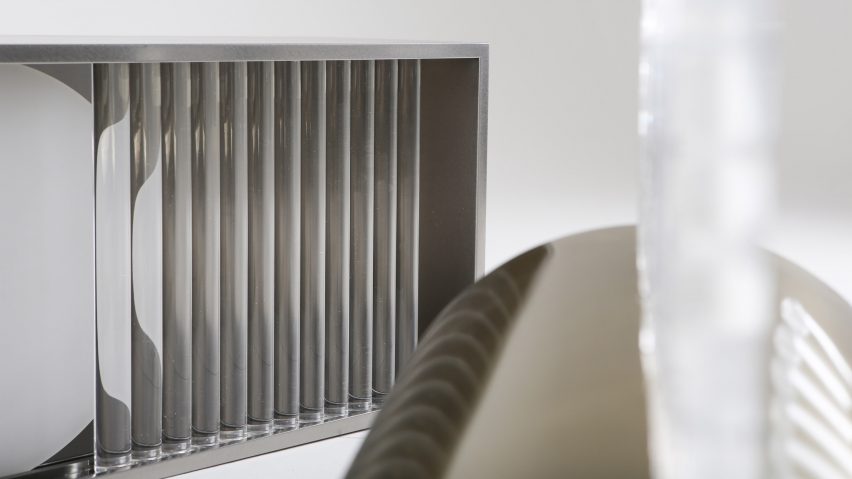
Jihye Kang creates refractive furniture from rows of acrylic rods
Hongik University graduate Jihye Kang built her Purity furniture from acrylic and stainless steel as an exploration of the refractive effects that can be achieved with simple materials and shapes.
Fascinated by the way light plays with certain materials, Kang begun researching the various characteristics and potentials of acrylic, focusing on its reflective and refractive properties.
After studying the thickness, shape and size of acrylic, the Seoul-based designer found that the refraction of the material was expressed best through the form of round rods.
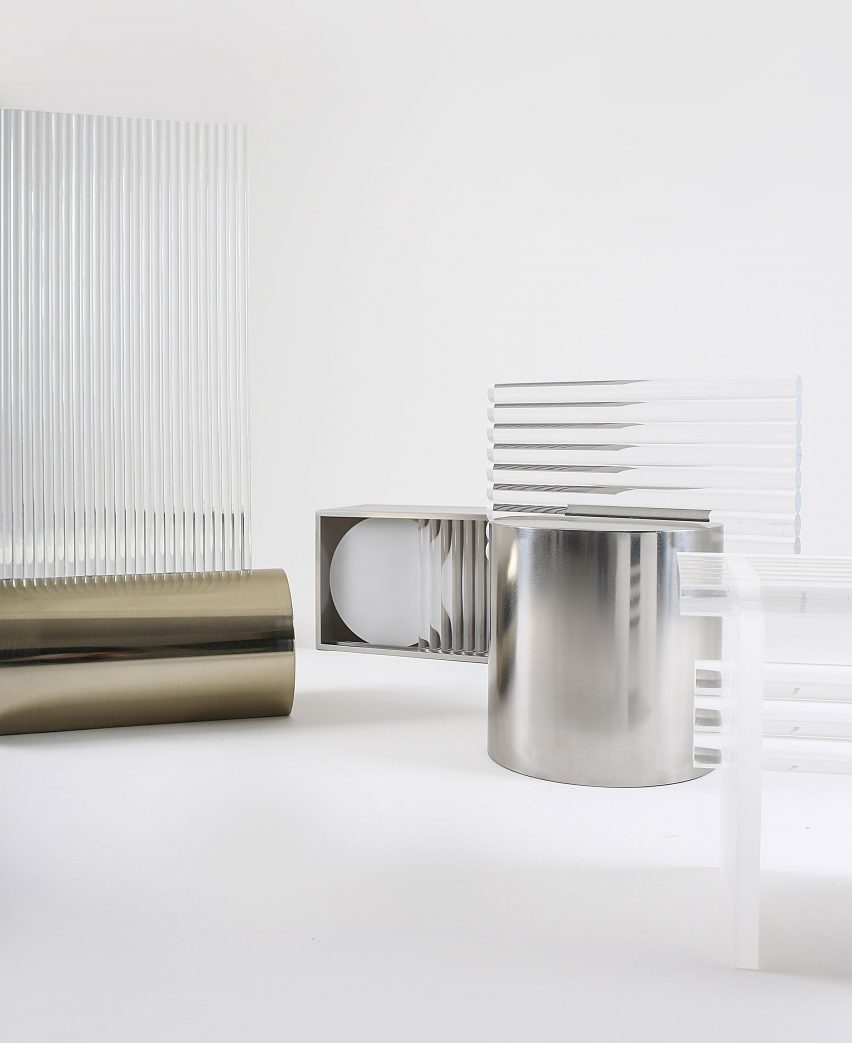
The 10-piece furniture series comprises side tables, chairs, stools and partitions made up of thick, cylindrical acrylic rods that are arranged in neat rows and often mounted on clean-cut stainless steel bases.
Kang wanted to pair the acrylic with a material that would express its refractive qualities. She crafted the steel into different shapes and sizes, experimenting with what would best bend and warp the reflective image.
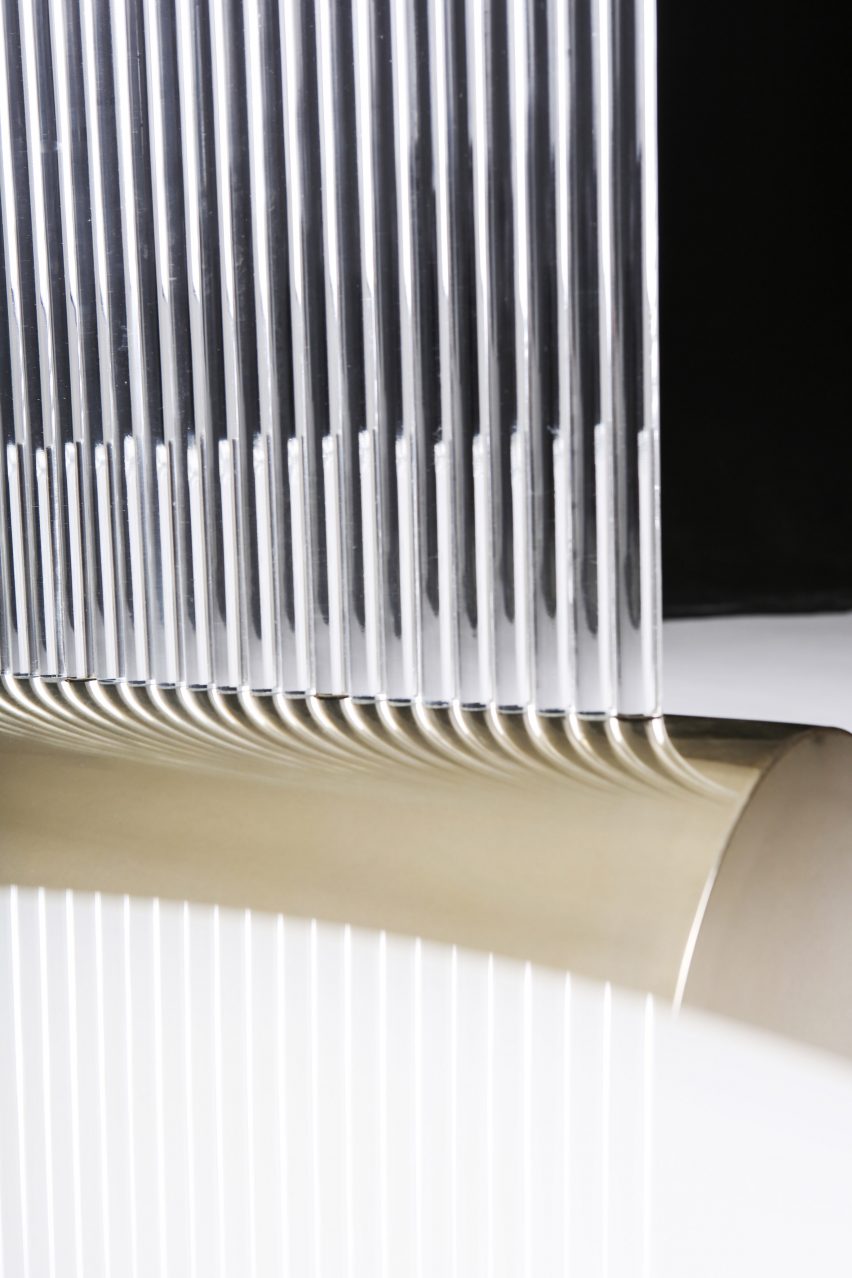
"Although the common first impression of acrylic is that it is hard and static, its transparency creates an interaction between the material and other objects and movements," said Kang.
"The relationship between these elements makes the material livelier and more dynamic than what otherwise might be expected," she added.
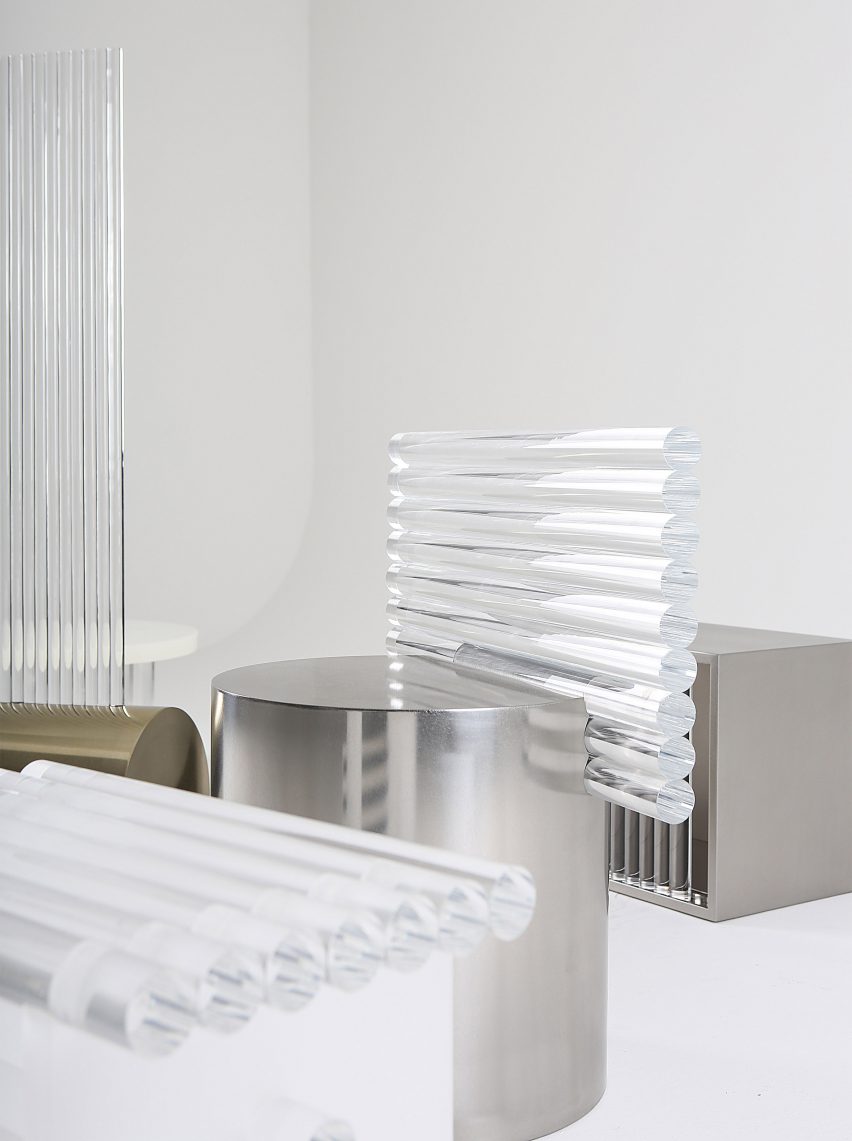
As Kang explains, the furniture collection has "basic rules": firstly, the round acrylic rods should be uniform in size and alignment.
Secondly, the objects and materials that are introduced with the acrylic should be of regular shape. This will allow users to clearly observe the effects of refraction, which change at random in relation to the viewer's line of sight.
The last rule is employing "the most basic" forms, avoiding any particularly decorative elements.
Yang uses a special adhesive to secure the various acrylic components together that make up each furniture object, making sure to conceal the joints in order to not detract attention from the qualities of the material itself.
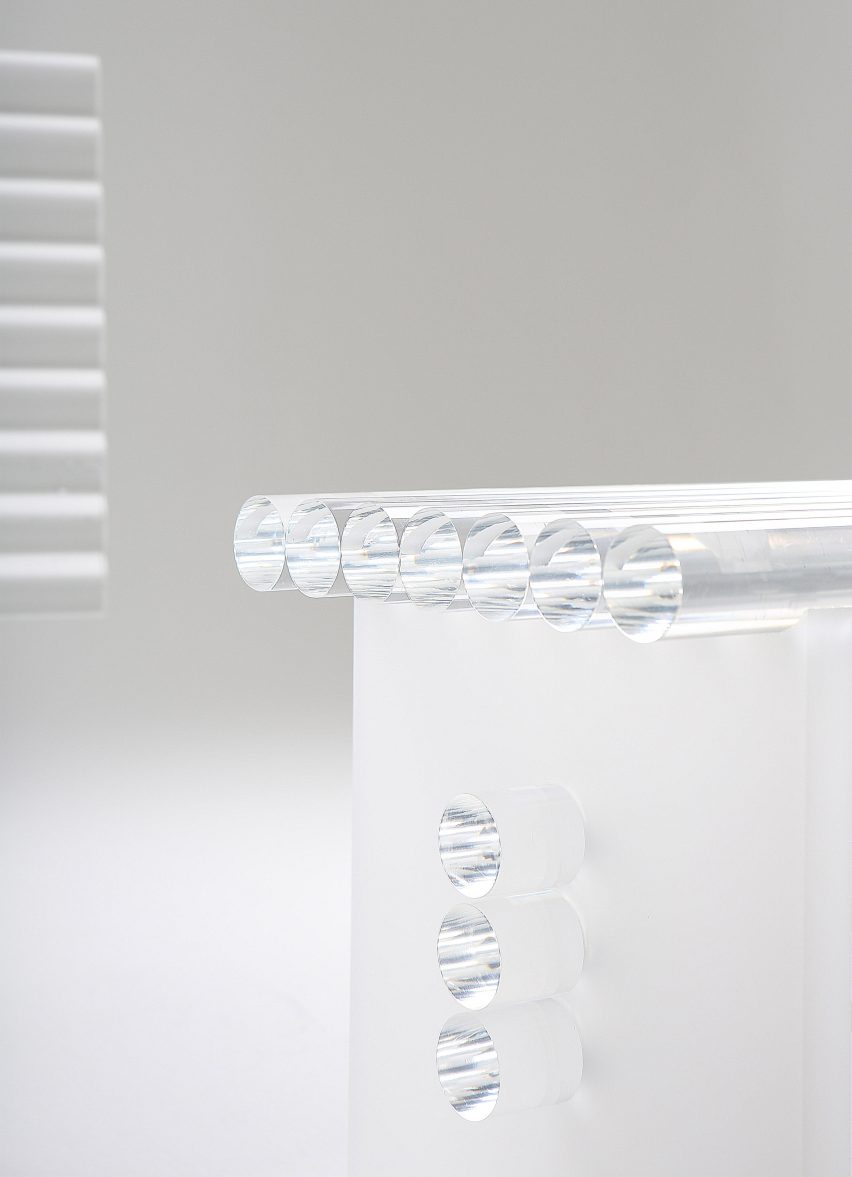
To familiarise herself with the "unpredictable" qualities of the acrylic, she experimented with a variety of surface finishes as well as making a 1:10 scale mock-up of each piece before manufacturing it in its real dimensions.
"There are still several points that I cannot predict," Kang told Dezeen. "The Purity series reveals effects that were not intended, because the clear acrylic is affected by the sense of place such as background, lighting, natural light, movement of user, angle of viewer."
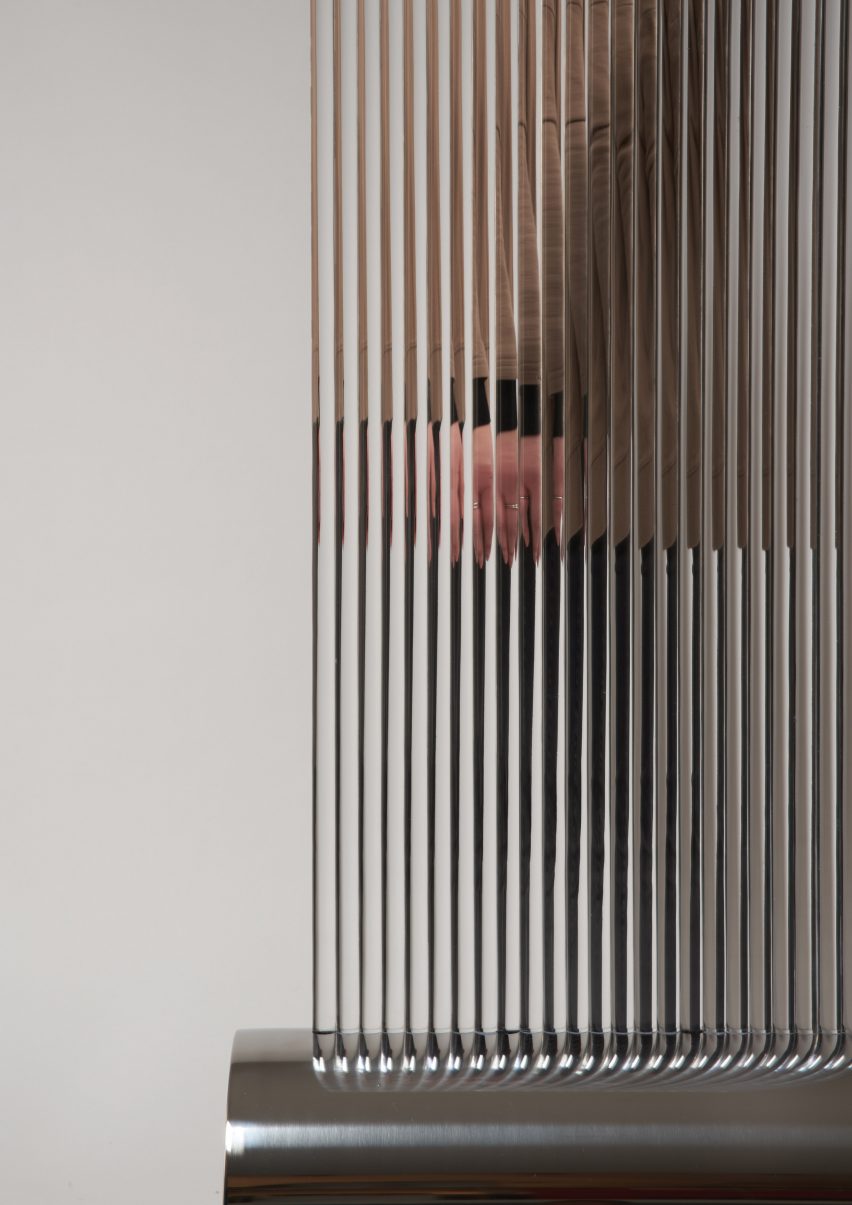
"So not only during the production period, but also after completion, I always feel satisfied and lacking at the same time in my work," she added.
Belgian design duo Fien Muller and Hannes Van Severen also employed a tubular design in their Alltubes furniture collection, which features metal pipes lined up in welded rows.